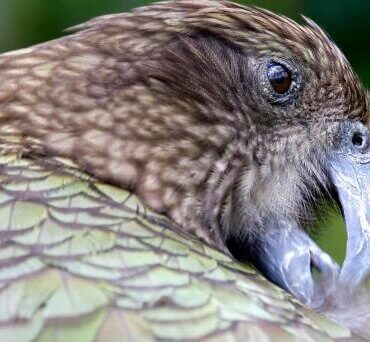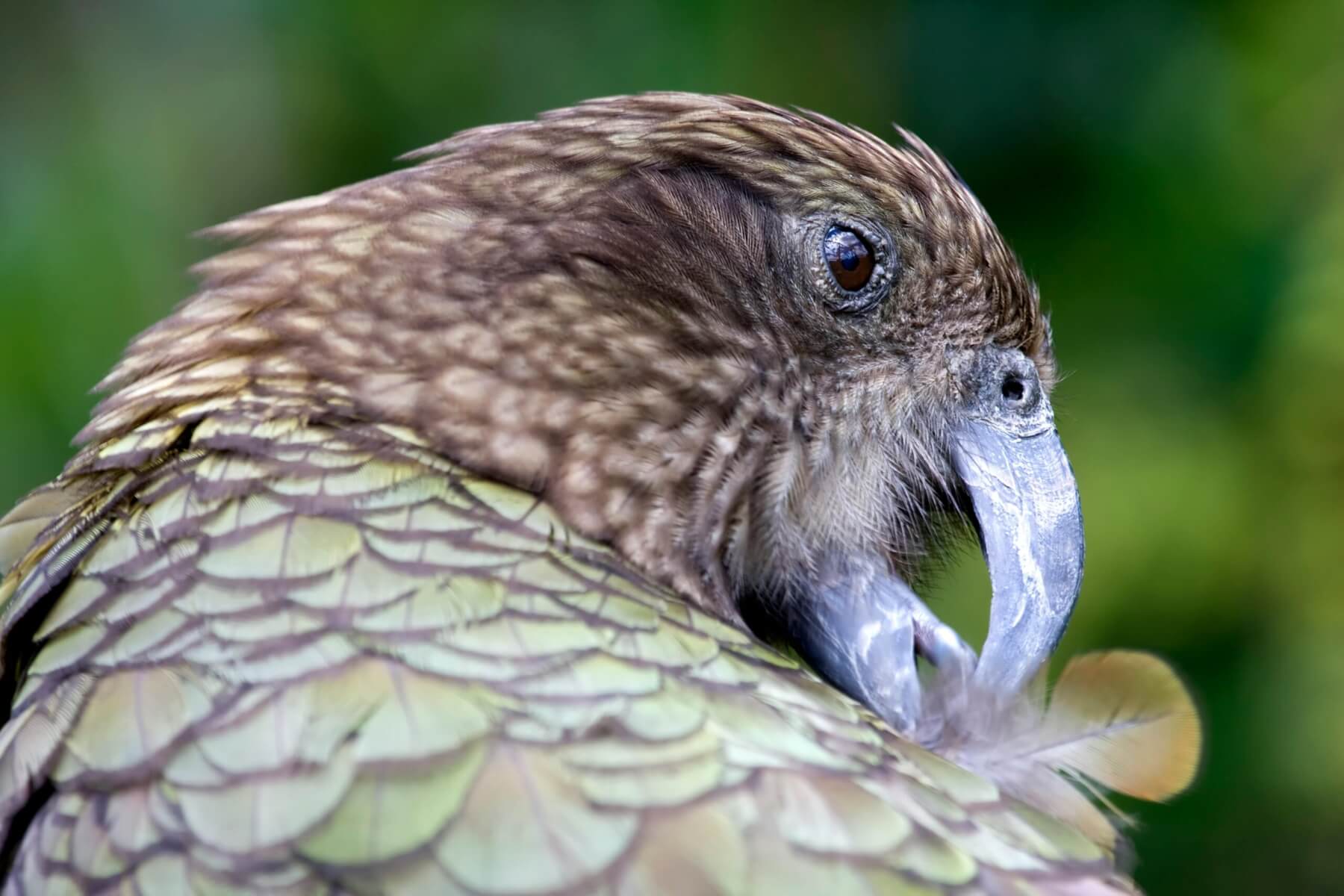
Close up shot of a kea. Photo: Darren Patterson pexels.com
We have some incredible birds in New Zealand. Anyone who’s driven through the South Island has probably encountered the kea (our alpine clown) and if you’ve been lucky enough to go to Stewart Island, you’ve probably heard a few of the 20,000 kiwi inhabitants.
A Close-Up Shot of a Kea. Photo: Mudassir Ali
The male has a shrill and thrilling call that cuts right through you; the female sounds like she’s throwing up. Stewart Island is rugged and wild, and it’s never been aerially poisoned with 1080, until now. Zip – Zero Invasive Predators – poison drops are scheduled to begin in 2025.

Clyde Graf
I have to ask – why would you drop poisoned food onto an island where kiwi are thriving? Kiwi chicks are vulnerable to stoats but there are no stoats on Stewart Island. The Graf boys (me, and my brother Steve) have filmed a good range of birds there, including kiwi, ruru, kaka and tomtits. My brother has even produced a full-length documentary on the lives of the yellow-eyed, and the Fiordland Crested penguins, the rarest penguins in the world.
Whatever poison you drop will kill birds. Cereal baits containing 1080 or brodifacoum are food, and food is scarce in winter.
The neighbouring Ulva Island brodifacoum drop in 2023 killed rats but it also killed robins, saddleback, rifleman, brown creeper, and all but one weka with chicks.
The recent Wet Jacket (Fiordland) and Matukituki (Wanaka) 1080 drops killed 50 per cent of the radio-tagged kea. Back in 2011, DOC killed 78 per cent of monitored kea in North Okarito. An Official Information Act response from DOC this month states “…we expect the mortality rate of the unmonitored population to be proportionate to the monitored birds.” Paradoxically, that means DOC is killing a lot of endangered kea when they drop poison into their environment to save them.
DOC says that 1080 isn’t killing kiwi, but you have to test kiwi for 1080 to know that. In 2018, I asked for a list of dead kiwi found in Northland over a 20-year period, their cause of death, and whether they were tested for poison residues.
Of 740 dead kiwi, 53 were tested for anticoagulants such as brodifacoum – 37.7 per cent were positive. Not a single one’s cause of death was listed as “pesticide”. They had only tested three kiwi in the whole of New Zealand for 1080 and none for fluorocitrate (a deadly metabolite of 1080).
This reluctance to test kiwi continues, so it was a surprise to see that two dead kiwi were tested from South Okarito in November 2022, and that the results were positive for 1080. DOC still didn’t say 1080 killed them.
We know that invertebrates eat cereal baits, and we know that kiwi eat cereal baits and invertebrates. Either way, when you drop poisoned food from the sky, it will reach a lot of beautiful birds. It’s how the food chain works.
On a recent Breakfast show, DOC asked people not to feed the kea because feeding them novelty food items is killing them. How ironic.
When will this ecocide end, you ask? I guess, in their minds, the $80 million incentive attached to the Stewart Island project justifies the insanity.

Close up shot of a kea. Photo: Darren Patterson pexels.com








